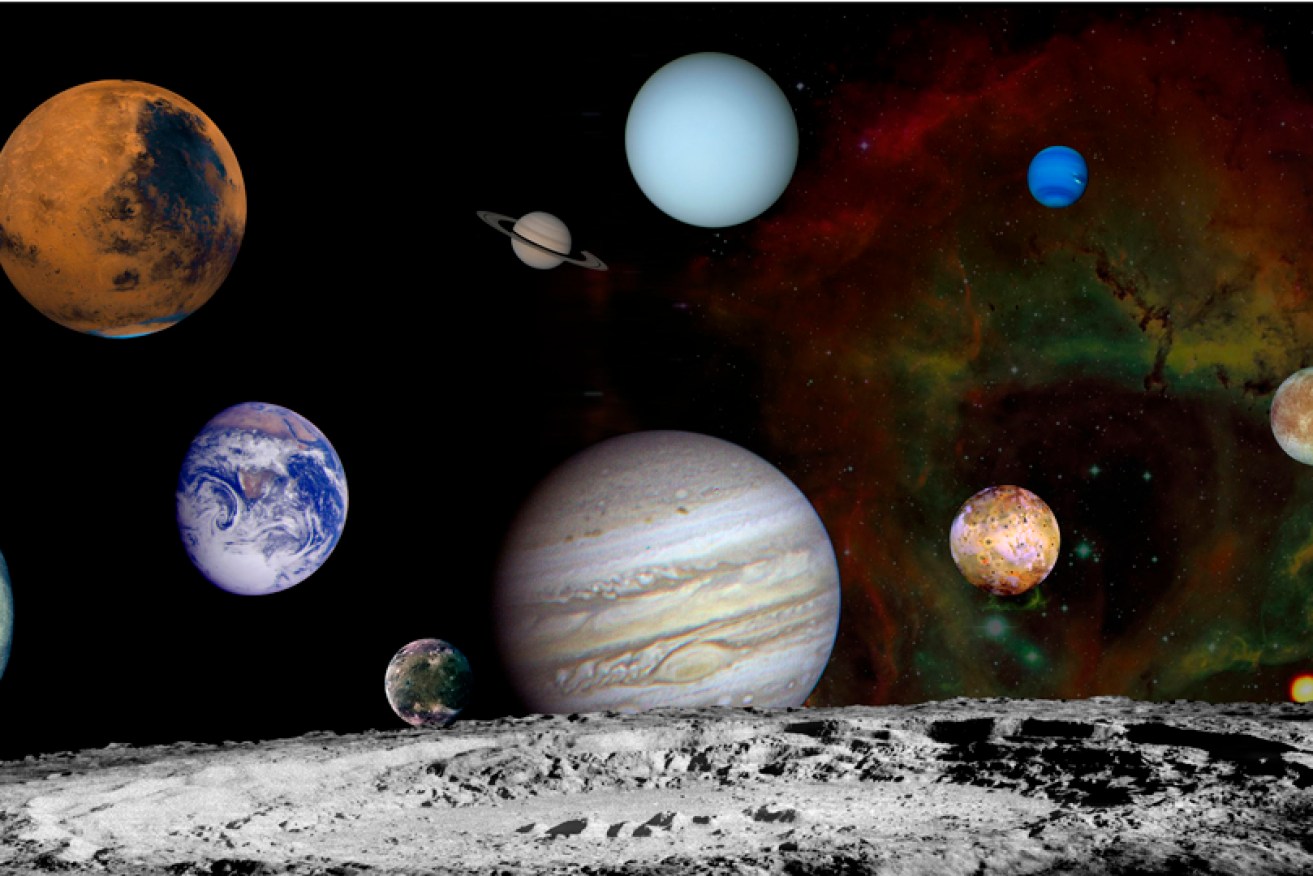Scientists discover a new moon at Neptune

This montage of images taken by the Voyager spacecraft of the planets and four of Jupiter's moons. Photo: SSPL/Getty
When Voyager II flew past Neptune in August of 1989 it revealed a complex system of 13 moons, six of which had never been seen before.
Thirty years later, scientists say the space probe missed one.
Using data from the Hubble Space Telescope, astronomers have discovered an elusive seventh ice moon around the ice giant that fell just out of Voyager‘s field of view. Its new name is Hippocamp.
“Voyager was a little bit unlucky,” said Mark Showalter, a planetary astronomer at the SETI Institute and lead author of a paper describing the moon published in Nature.
“There was a number of times when Voyager’s camera came pretty close to seeing it, but missed it, sometimes by as little as 100 pixels.”
Tiny Neptune Moon Spotted by Hubble May Have Broken from Larger Moon – The tiny moon, named #Hippocamp, is unusually close to a much larger Neptunian moon called Proteus. | @MarkRShowalter @nature https://t.co/L8eju5LcMt pic.twitter.com/uEEXPjoqDR
— The SETI Institute (@SETIInstitute) February 20, 2019
After the flyby, Voyager II did take images of the entire Neptune system, but Hippocamp was too small and faint to be detectable in those pictures, he said.
Neptune is the eighth planet in the solar system and orbits the sun at the staggering distance of 4.5 billion kilometres. That’s roughly 30 times farther from the sun than Earth.
It is so far away that our best space-based telescopes struggle to make out its smaller satellites.
Hippocamp does not appear in Hubble images of the Neptune system, even in a lengthy five-minute exposure.
“We overexpose Neptune by a factor of 50 and even then Hippocamp is below our detection threshold,” Mr Showalter said.
To find Hippocamp, scientists used a complex and time-consuming process that allowed them to stack eight Hubble images on top of each other, essentially creating a single, 40-minute exposure.
They originally invented the process to study the faint arcs, or incomplete rings, around Neptune, but then realised it could be used to detect small, hidden moons as well.
“We reapplied the analysis to the whole image, and that’s when Hippocamp showed up,” Showalter said.
-AAP








